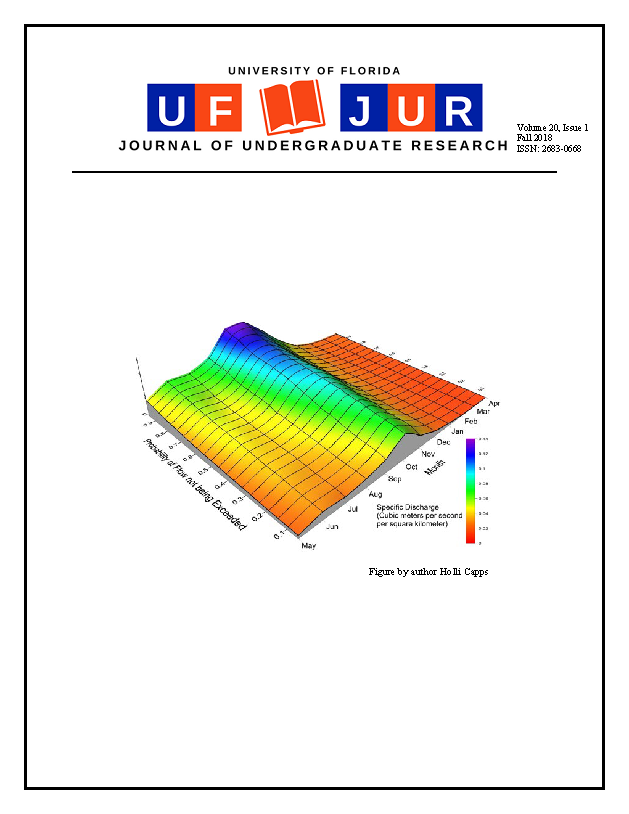Culture Through Color Perception in "West Side Story"
DOI:
https://doi.org/10.32473/ufjur.v20i1.106281Keywords:
undergraduate research, film studies, theatre studies, West Side Story, color theoryAbstract
My project is part of my larger, ongoing research interest on the representation of social identities in American cinema. My poster/paper will focus on the use of color theory to clearly characterize members of rival ethnic gangs in the 1961 film adaptation of West Side Story. Originally a 1957 Broadway musical loosely based on William Shakespeare’s Romeo and Juliet, West Side Story captured audiences with its groundbreaking innovation in choreography and music, while earning praise from critics for delving into contemporary issues like immigration and gang-related violence. It won an astonishing ten Academy Awards, including the Academy Awards for Best Costume Design and Best Art Direction, and still holds the record for the most Academy Awards won by a movie musical.
While much of the existing research on West Side Story focuses on references of vying cultures made explicitly through song and dance, my research instead focuses on the non-verbal representations of these cultures that are expressed through color in the film. By studying the film’s iconic art direction and investigating audiences’ subsequent perceptions of characters and settings, I argue that the colors featured in the costume designs and set designs are used to denote a culturally-charged power structure within the Jets and the Sharks. Based on close examination of these various designs, the film’s overall color palette, and published scholarship, I conclude that West Side Story's non-verbal references are uniquely dangerous to its explicit references, as they subliminally promote harmful stereotypes and suggest that gang violence brings life to an otherwise drab city. Studying the connection between color theory and culture ultimately illuminates the historical roots of society's perceptions of colors and their seemingly inherent associations to certain traits.
Metrics
References
Berson, Misha. Something's Coming, Something Good: West Side Story and the AmericanImagination. Milwaukee, WI: Applause Theatre & Cinema Books, 2011. Print.
Charleston, Beth D, and Harold Koda. “Christian Dior (1905–1957) | Essay | Heilbrunn Timeline of Art History | The Metropolitan Museum of Art.” The Met's Heilbrunn Timeline of Art History. The Metropolitan Museum of Art, Oct. 2004. Web.
Fehrman, Kenneth, and Cherie Fehrman. Color: The Secret Influence. Upper Saddle River, N.J:Prentice Hall, 2000. Print.
Garebian, Keith. The Making of West Side Story. Oakville, ON: Mosaic Press, 1998. Print. Knapp, Raymond. The American Musical and the Formation of National Identity. Princeton, N.J: Princeton University Press, 2005. Print.
Pleij, Herman. Colors Demonic and Divine: Shades of Meaning in the Middle Ages and After., 2004. Print.
Sharaff, Irene. Broadway & Hollywood: Costumes Designed by Irene Sharaff. New York: Van Nostrand Reinhold Co, 1976. Print.
West Side Story. Dirs. Jerome Robbins and Robert Wise. The Mirisch Corporation, 1961. Film.
“West Side Story (1961) Photo Gallery.” IMDb. IMDb.com, n.d. Web.
Downloads
Published
Issue
Section
License
Some journals stipulate that submitted articles cannot be under consideration for publication or published in another journal. The student-author and mentor have the option of determining which journal the paper will be submitted to first. UF JUR accepts papers that have been published in other journals or might be published in the future. It is the responsibility of the student-author and mentor to determine whether another journal will accept a paper that has been published in UF JUR.

